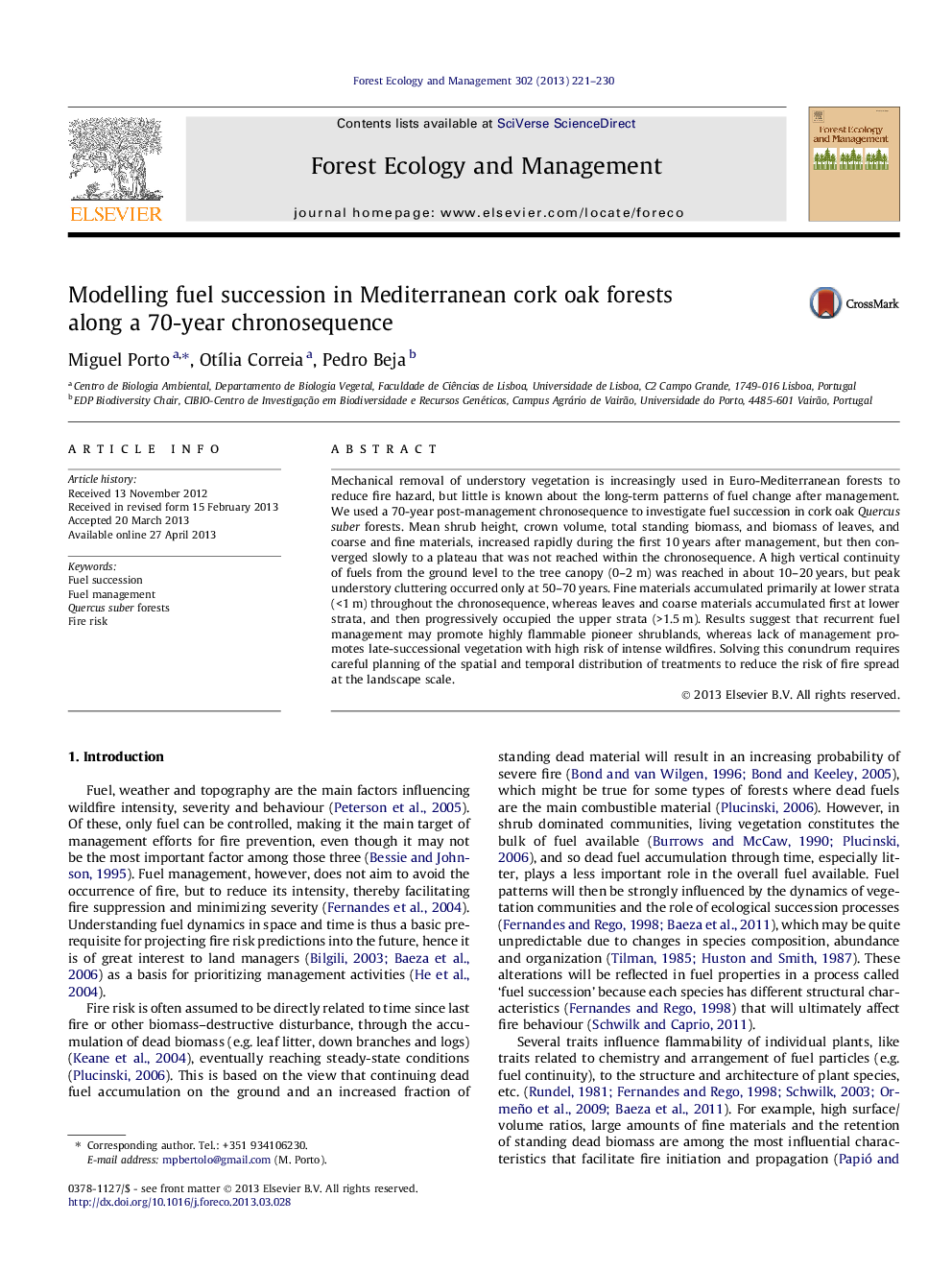| کد مقاله | کد نشریه | سال انتشار | مقاله انگلیسی | نسخه تمام متن |
|---|---|---|---|---|
| 87072 | 159230 | 2013 | 10 صفحه PDF | دانلود رایگان |

• We measure and model long-term patterns of standing biomass after fuel management.
• Fuel load and vertical continuity increased rapidly in the first 10–20 years.
• Fine fuels accumulated in lower strata (<1 m) throughout the chronosequence.
• Coarse fuels and leaves occupied mainly the upper strata (>1.5 m).
• Peak understory cluttering occurred 50–70 years after management.
Mechanical removal of understory vegetation is increasingly used in Euro-Mediterranean forests to reduce fire hazard, but little is known about the long-term patterns of fuel change after management. We used a 70-year post-management chronosequence to investigate fuel succession in cork oak Quercus suber forests. Mean shrub height, crown volume, total standing biomass, and biomass of leaves, and coarse and fine materials, increased rapidly during the first 10 years after management, but then converged slowly to a plateau that was not reached within the chronosequence. A high vertical continuity of fuels from the ground level to the tree canopy (0–2 m) was reached in about 10–20 years, but peak understory cluttering occurred only at 50–70 years. Fine materials accumulated primarily at lower strata (<1 m) throughout the chronosequence, whereas leaves and coarse materials accumulated first at lower strata, and then progressively occupied the upper strata (>1.5 m). Results suggest that recurrent fuel management may promote highly flammable pioneer shrublands, whereas lack of management promotes late-successional vegetation with high risk of intense wildfires. Solving this conundrum requires careful planning of the spatial and temporal distribution of treatments to reduce the risk of fire spread at the landscape scale.
Journal: Forest Ecology and Management - Volume 302, 15 August 2013, Pages 221–230